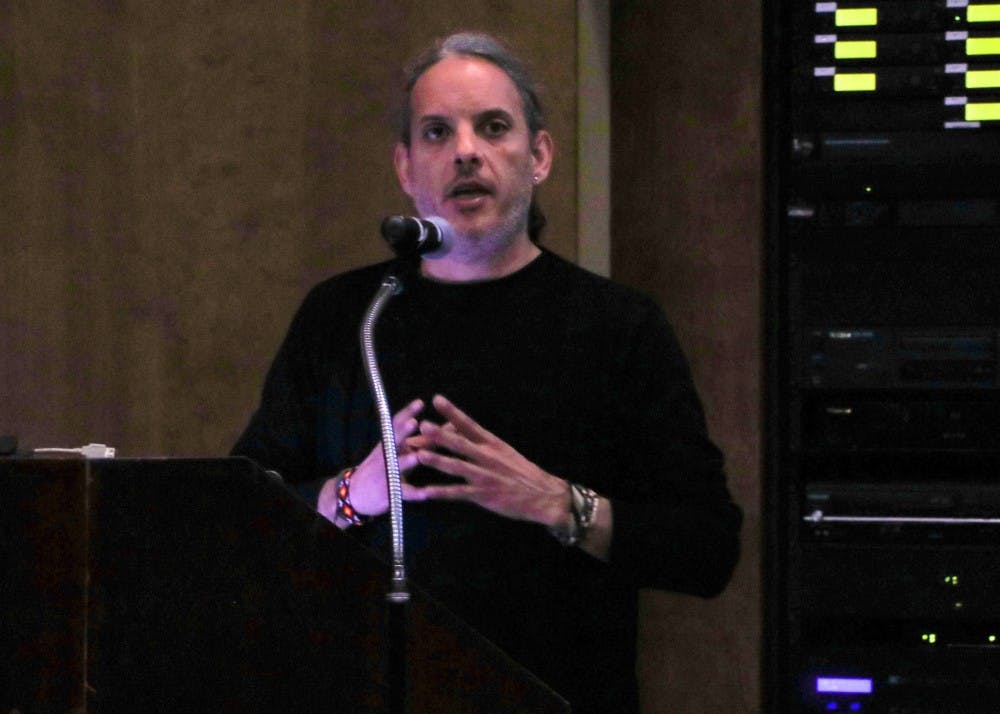In a small village in Veracruz, located near the Gulf of Mexico, Claudio Talavera-Ballón sees the train turn the corner and people line the tracks. Las Patronas — a group of women in the village — prepare bags filled with refried beans and spiced rice. When they see the train, or “la Bestia,” their hearts race as they stand next to the tracks ready to hand off white plastic bags. Migrants, including children as young as six-years-old, ride the train and must swing down their arms to reach Las Patronas for the bags. They must be careful, or they might fall off the moving bestia.
Every year, hundreds of migrants from El Salvador, Nicaragua, Honduras, Guatemala, Mexico and other Latin American countries ride the dangerous trains for hundreds of miles. Their goal is to reach the United States and Mexico border to seek asylum or enter the U.S. Talavera-Ballón traveled to Mexico recently with the hopes of learning the experiences of Las Patronas and migrants trying to make it to the U.S. border.
On Wednesday night, students, faculty and staff filed into Buckley Center Auditorium to hear artist Talavera-Ballón shed light on “art, migration and the role of women in social justice.” He is an oil painter and muralist originally from Peru who now lives in San Francisco. His pieces focus on the relationship between art and social justice issues. He has worked with many Latin American farmers, fisherman, migrants and women to highlight their “struggles and wisdom.”
“I consider artists to be ordinary workers whose jobs are to portrait everyday people,” Talavera-Ballón said.
Talavera-Ballón draws on his experiences and connections with people to help create his artwork. He said initially his art isn’t intended to have the perfect shapes, shadows or colors, but rather highlight social justice issues like immigration.
“Art or painting is a form of protest,” Talavera-Ballón said. “I don’t believe in violence. My paint brushes are my weapons of choice.”
In some of his paintings, he depicts images of Peruvian fisherman. He said that for much of his life, the ocean has fascinated him and he wanted to showcase the techniques fisherman have. According to Talavera-Ballón, his paintings were a protest against illegal industrial fishing in Peru.
“His artwork was so detailed and very prevalent to everything that’s going on today,” said sophomore Ashley Martinez.
One of his other series, “Mujeres Luz,” consists of 14 pieces that focus on the women in La Patrona, a small village, who prepare and give food to migrants traveling to the U.S. and Mexico border by train. Many of the riders are children under the age of 17, many of whom leave home in search for family members living in the U.S. or with the hopes of finding more opportunity. These children often do not have any money and almost no food and water for a majority of the ride.
When he heard about these women, he decided to travel down to La Patrona with his wife to meet them. Once he arrived, he saw the profound impact the women have on the riders, even though their hands meet for only a brief moment. He said these women act as a sign of hope for riders on their long journey north.
After witnessing what the women do, he said he wanted to create this series to “celebrate these women, their determination, courage and generosity in making the world a better place.”
“Staying in Las Patronas was very wonderful, a magical experience, because of the incredible humanitarian work they (Las Patronas) do,” Talavera-Ballón said.
Through his paintings, his goal is for viewers to create a connection with the piece of work, inspire others and understand humanity within migrants.
For Martinez, she said she really enjoyed that Talavera-Ballón connects his artwork to current events going on.
“I come from a Hispanic background and I have family who is from Veracruz, so just watching that whole process (Las Patronas giving food to migrants) happen is pretty amazing and how people just look out for others,” she said.
Along with the women in La Patrona, Talavera-Ballón also visited shelters in Mexico that house members of some of the most recent caravans. Hundreds of migrants traveled from countries like El Salvador, Honduras, Nicaragua, Guatemala, many of whom are fleeing violence and political unrest in their own countries.
In a current series he is working on — “Migrants” — Talavera-Ballón wants to eliminate the dehumanization of migrants that he said is often portrayed by the media. He said they were not just immigrants, but real humans and wants to make sure people understand that these migrants deserve the same rights.
“(I hope UP students) understand that even know that people can be perceived as criminals or have this title to them that makes them another, that who cares and just provide them with basic human rights like food and water,” Martinez said.
For Talavera-Ballón, he said that his artwork isn’t about always looking pretty, but rather focusing on issues that combat social injustices.
“My big hope is that through my artwork, I can contribute so that their stories are made known and their lives get honored,” he said. “I hope that I can inspire people like you tonight and together we can fight for a better and juster world.”
Claire Desmarais is the news and managing editor for The Beacon. She can be reached at desmarai20@up.edu.








